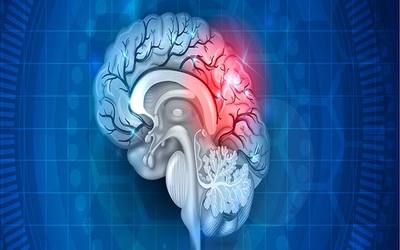A Stroke is a medical emergency that occurs when blood supply to part of the brain is reduced or interrupted. The brain cells need nutrients and oxygen from the blood supply for their daily function when deprived, it usually causes a stroke.
[the_ad id=”6114″]
It is a serious medical condition that damages the brain and can lead to paralysis or even death, if not attended immediately.
Here are a few FAQs on stroke:
What are the types of Strokes?
-
- There are two types of strokes, namely, Ischemic and Hemorrhagic. When a blood vessel or artery in the brain is blocked or plugged by a blood clot, an Ischemic stroke occurs. When the blood vessel breaks and bleeds into the brain, a Hemorrhagic stroke occurs
Did you know: 80% of all strokes are Ischemic strokes while the rest is Hemorrhagic.
What are the symptoms of a stroke?
- Sudden numbness or weakness of the face, arm or leg — especially on one side of the body
- Sudden confusion or trouble speaking or understanding
- Sudden trouble seeing in one or both eyes
- Sudden trouble walking, dizziness, loss of balance or coordination
- Sudden severe headache with no known cause
In simpler terms, identify stroke with the following: BE FAST
F: Facial Drooping, A: Arm Weakness, S: Speech Difficulties, T: Time to reach a stroke-ready hospital
Why can’t some victims identify stroke symptoms?
- As stroke affects the brain, often the patient fails to perceive their own problem correctly. For a person standing next to the patient, they may seem unaware or often confused about what’s happening to them. The patients’ best chance is if someone recognizes the stroke and acts quickly.
What should a bystander do?
- It is very essential for everyone to know the signs of a stroke. They should look at the FAST signs of a stroke. If they see a patient lose the ability to speak, or move an arm or leg on one side, or experience facial paralysis on one side, they should immediately rush to an emergency department of a stroke ready hospital. Getting immediate help can save the patients’ life and improve their chances of successful rehabilitation and recovery.
Why is there a need to act fast?
- The artery obstructing clots causing ischemic strokes can be dissolved with a drug called T-PA. It presents a small window of opportunity of 4-5 hours, where a patient needs to be evaluated at least 60 mins prior so that the treatment could be administered. A study conducted showed that patients receiving T-PA within four-five hours of stroke are 30% more likely to recover with little to no disability after three months than the patients who received late treatment.
Can a stroke be prevented?
High Blood Pressure and a heart condition are known as atrial fibrillation can double the risk of stroke. Patients who smoke, who have diabetes, sickle cell disease, high cholesterol or a family history of stroke are more prone to stroke. Maintaining a healthy weight, a healthy lifestyle, monitoring BP and cholesterol levels, refraining from smoking can greatly reduce the chances of stroke.
To summarize, reduce the chances of occurrence of stroke by maintaining a healthier body and lifestyle
How long does it take to recover from a stroke?
- The recovery process of stroke varies from patient to patient as it depends on the amount of brain damage the person has suffered. For some patients, the process is rather quick while for some patients due to the severity of the complications, it may take months or even years.
Source:

